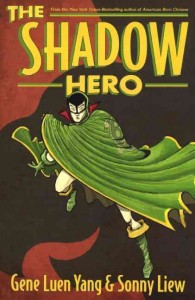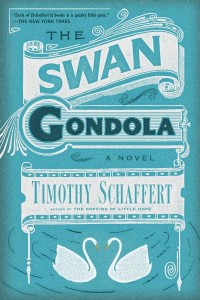 Nancy from Circulation Services concludes the week with this review:
Nancy from Circulation Services concludes the week with this review:
Terry Pratchett’s The Amazing Maurice and his Educated Rodents focuses on a group of rats led by a sly, conniving cat.. Oh, and let us not forget, the animals have gained the ability to speak to humans, think for themselves, reason, and gain a conscience. Pratchett allows his reader to contemplate the possibility of a society where animals, namely rodents, can not only live in peace and harmony with humans, but the two can help each other in the process.
In the town of Bad Blinitz Maurice the cat and his cohorts decide to pull their “Pied Piper” con. Little did they know that the town was fighting a food shortage thought to be brought on by the current rat population, and thus have hired rat catchers and deployed menacing traps throughout the city both above and below.
The fear of a plague from these rats caused scam artists of all kinds to attempt to capitalize on the growing fear of famine. Enter a small boy playing a magical rat pipe, who for a tidy sum would rid the town of rodents. Add in a know-it-all and somewhat bratty, young girl named Malicia, and the mayhem begins.
Pratchett’s sarcastic wit comes out in the actions and words of Maurice, the streetwise alley cat, while his fantasy and adventurous side is enjoyed through the antics of rat characters such as Hamnpork, Darktan, Dangerous Beans, and Sardines.
While reading this I found myself forgetting the main characters were simply animals for their wit, anxiety, emotional expressions, and snide comments fit many humans I know. Pratchett also adds an interesting aspect to the story in the form of quotes from another book introducing each chapter. The rats revere what is later discovered as a children’s book, “Mr. Bunnsy has an Adventure;” treating it as wisdom to live by.
Enjoy!
Check the WRL catalog for The Amazing Maurice and his Educated Rodents
 Amber Appleton, at seventeen years old, is a busy girl – visiting the elderly at the local nursing home, swapping haikus with a Vietnam veteran, teaching English through R&B at a Korean Catholic church, and looking out for the socially-struggling guys of the “Franks Freak Force Federation.” She is an optimist, a Catholic, and homeless – sleeping in the school bus her single mother drives all day before barhopping at night for Mr. Right Now. Amber makes up for the lack of stability in her life with the diversion she finds in helping and connecting with others. Readers will question whether her pluck, happiness, and faith are in spite of her situation or because of it. Amber’s voice is funny, snarky, and authentic (her language likely influenced by Quick’s former years teaching high school). In the hands of a less skilled author, this could be a gag-inducing after-school special about unlikely triumph, but Quick gives us a real story about relationships, hardship, joy, and emotional survival.
Amber Appleton, at seventeen years old, is a busy girl – visiting the elderly at the local nursing home, swapping haikus with a Vietnam veteran, teaching English through R&B at a Korean Catholic church, and looking out for the socially-struggling guys of the “Franks Freak Force Federation.” She is an optimist, a Catholic, and homeless – sleeping in the school bus her single mother drives all day before barhopping at night for Mr. Right Now. Amber makes up for the lack of stability in her life with the diversion she finds in helping and connecting with others. Readers will question whether her pluck, happiness, and faith are in spite of her situation or because of it. Amber’s voice is funny, snarky, and authentic (her language likely influenced by Quick’s former years teaching high school). In the hands of a less skilled author, this could be a gag-inducing after-school special about unlikely triumph, but Quick gives us a real story about relationships, hardship, joy, and emotional survival. This volume of collected webcomics from Jillian Tamaki was a no-brainer purchase for the Young Adult Graphic Novel collection–it is centered on teen protagonists at an X-Men/Hogwarts-type boarding school, and is written and illustrated by the illustrator of the Printz Award-winning This One Summer. Upon receipt, it was cataloged for the Adult Collection, and when I sat down to reconsider its classification, I was hooked, and honestly doubtful as to just where this quirky volume should reside.
This volume of collected webcomics from Jillian Tamaki was a no-brainer purchase for the Young Adult Graphic Novel collection–it is centered on teen protagonists at an X-Men/Hogwarts-type boarding school, and is written and illustrated by the illustrator of the Printz Award-winning This One Summer. Upon receipt, it was cataloged for the Adult Collection, and when I sat down to reconsider its classification, I was hooked, and honestly doubtful as to just where this quirky volume should reside.



 The Graveyard Book was originally published as a novel in 2008 to a flurry of well-deserved praise, eventually earning the Newbery Medal, Carnegie Medal, and Hugo award. The story follows a boy named Nobody Owens, nicknamed Bod, who, as a very young child, flees to a graveyard after his parents are murdered by a man named Jack. The ghosts, after a heated discussion, extend to Bod the Freedom of the Graveyard, which protects him and allows him to interact freely with the dead. Of course, there is a limit to what a ghost can do, so Bod is assigned a Guardian, named Silas, who is neither living nor dead, and who can go out into the world of the living and procure the supplies that the boy needs. He begins his new life amongst the stones and tombs, protected from harm as Jack continues to search for his missing victim.
The Graveyard Book was originally published as a novel in 2008 to a flurry of well-deserved praise, eventually earning the Newbery Medal, Carnegie Medal, and Hugo award. The story follows a boy named Nobody Owens, nicknamed Bod, who, as a very young child, flees to a graveyard after his parents are murdered by a man named Jack. The ghosts, after a heated discussion, extend to Bod the Freedom of the Graveyard, which protects him and allows him to interact freely with the dead. Of course, there is a limit to what a ghost can do, so Bod is assigned a Guardian, named Silas, who is neither living nor dead, and who can go out into the world of the living and procure the supplies that the boy needs. He begins his new life amongst the stones and tombs, protected from harm as Jack continues to search for his missing victim. Refreshing and reinventing old superheroes has become somewhat fashionable recently, with rather mixed results. Some characters, like Batman, have seen so many iterations that it is difficult to separate them all, or find new ground to cover without being completely repetitive or utterly discarding canon. One good thing that has come out of this trend is the resurrection of old characters that never caught on, but were worthwhile for one reason or another.
Refreshing and reinventing old superheroes has become somewhat fashionable recently, with rather mixed results. Some characters, like Batman, have seen so many iterations that it is difficult to separate them all, or find new ground to cover without being completely repetitive or utterly discarding canon. One good thing that has come out of this trend is the resurrection of old characters that never caught on, but were worthwhile for one reason or another. A lot of admonishments are made about not judging a book by its cover. But as I was browsing our shelves, I came across this dark little volume and was immediately intrigued. Mimicking a dinged up, ink spattered journal, its rather grandiose title The Stuff of Legend was set above the drawing of a stuffed bear. Its face set with a sense of purpose, the bear steps towards the reader as if walking towards its destiny, glancing at the toys behind it with a look of either challenge or warning. It is an arresting image, but despite the ominous subtitle, The Dark, I picked up the book fully expecting the fluffy cuteness of the bear to be the reader’s companion through the story, juxtaposed against whatever low-level gloom the authors threw at the character. After just a few pages I realized I was entirely off base.
A lot of admonishments are made about not judging a book by its cover. But as I was browsing our shelves, I came across this dark little volume and was immediately intrigued. Mimicking a dinged up, ink spattered journal, its rather grandiose title The Stuff of Legend was set above the drawing of a stuffed bear. Its face set with a sense of purpose, the bear steps towards the reader as if walking towards its destiny, glancing at the toys behind it with a look of either challenge or warning. It is an arresting image, but despite the ominous subtitle, The Dark, I picked up the book fully expecting the fluffy cuteness of the bear to be the reader’s companion through the story, juxtaposed against whatever low-level gloom the authors threw at the character. After just a few pages I realized I was entirely off base.







